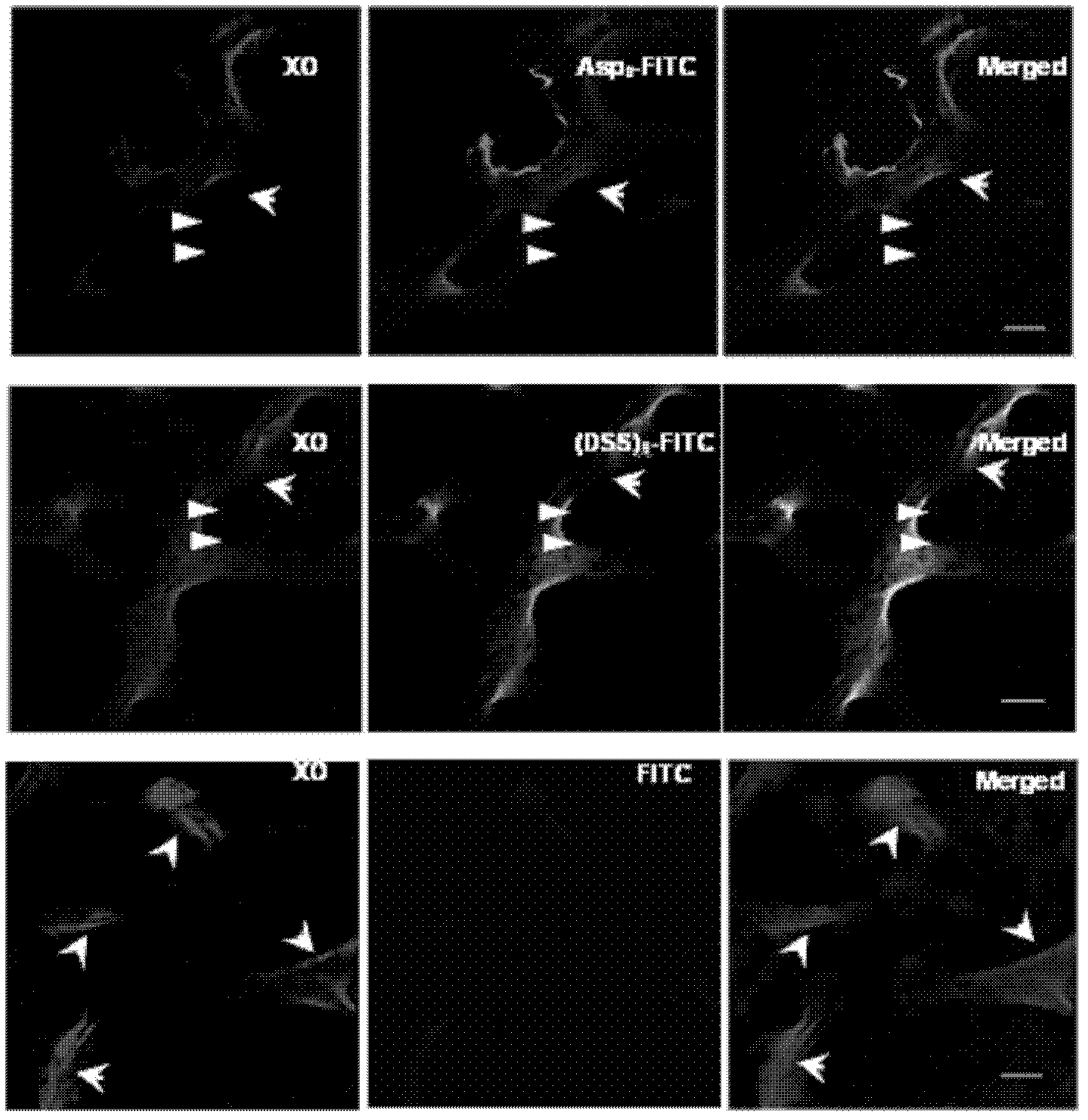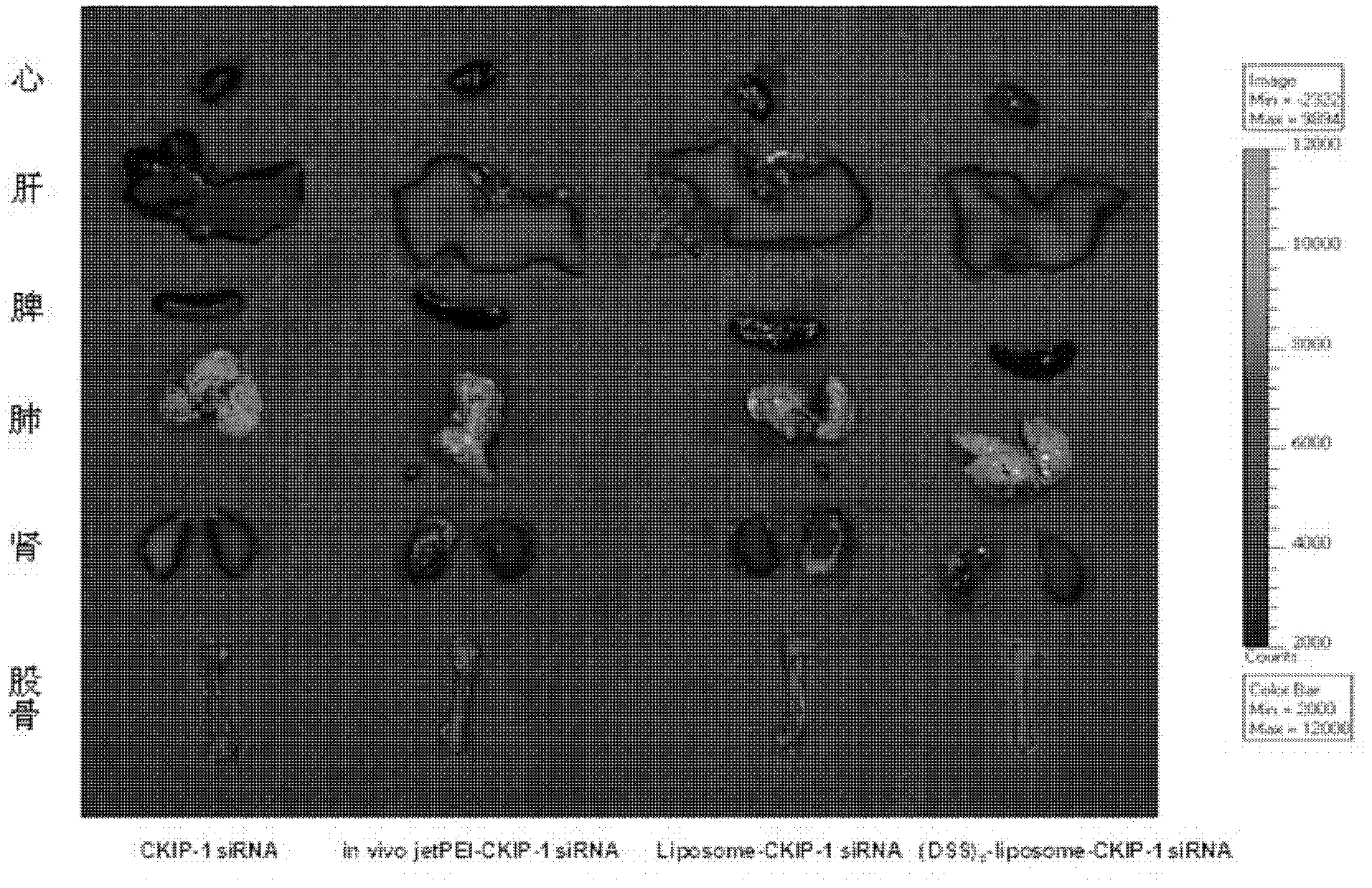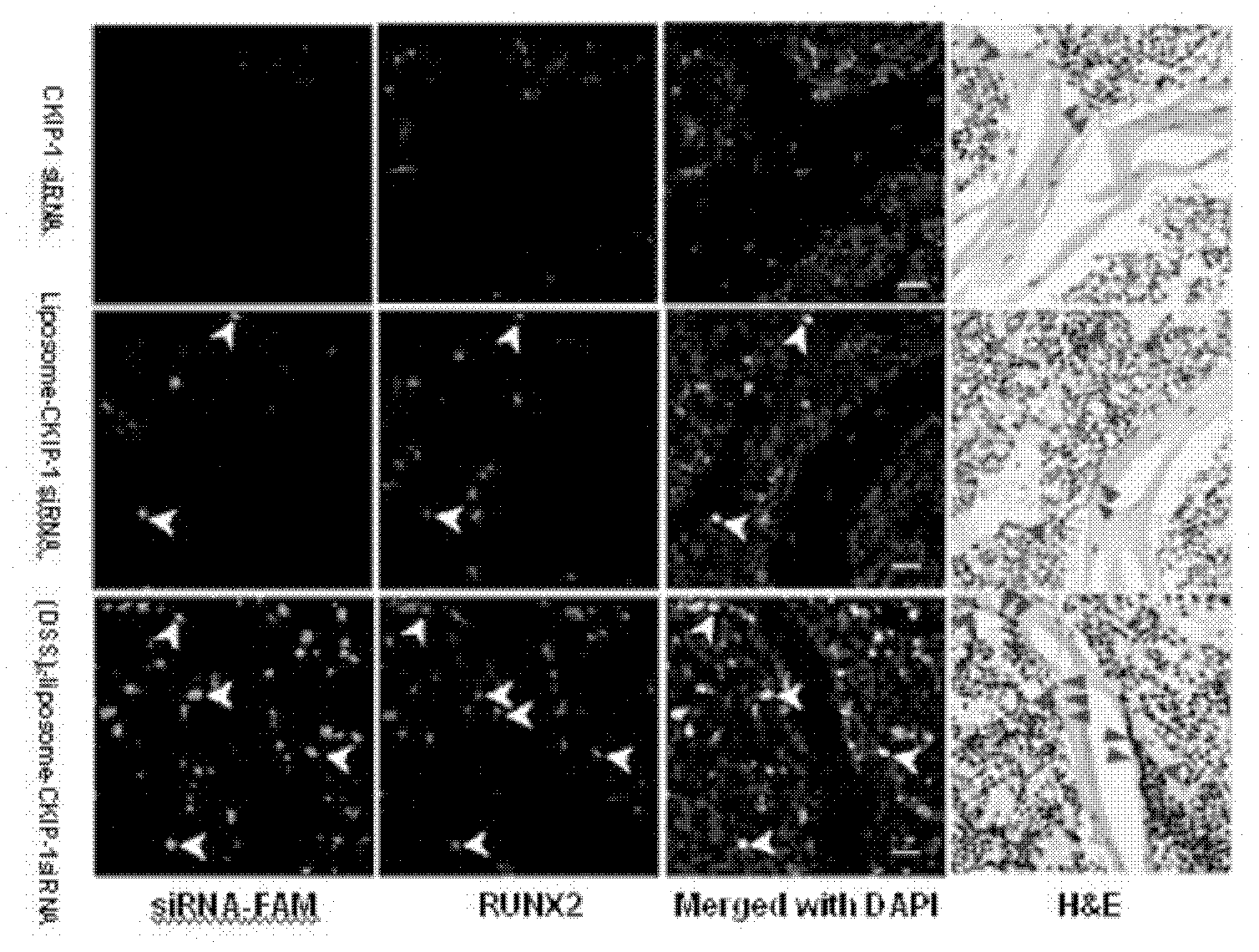Bone-targeted delivery system for osteogenesis treatment based on small nucleic acid medicine, and preparation method thereof
A technology for small nucleic acid drugs and delivery systems, which is applied in the field of molecular biology and can solve problems such as high transfection efficiency of polymer materials
- Summary
- Abstract
- Description
- Claims
- Application Information
AI Technical Summary
Problems solved by technology
Method used
Image
Examples
Embodiment 1
[0059] Embodiment 1 (DSS) 6 Ability to selectively target bone-forming surfaces
[0060] Eighteen 6-month-old female rats (Sprague-dawley) were selected and divided into FITC group (fluorescein isothiocyanate, n=6), Asp 8 Group (n=6) and (DSS) 6 Group (n=6). Asp 8 and (DSS) 6 Both were marked with FITC. Rats were subcutaneously injected 3 days in advance, and Xylenol Orange (XO, 30mg / kg) was injected to mark the surface of bone formation. After the rats were anesthetized with ketamine (75 mg / kg) and xylazine (10 mg / kg), FITC, Asp 8 -FITC and (DSS) 6 - FITC was administered by tail vein injection, 27 μM / kg / 0.2ml normal saline, respectively. After 24 hours, the rats were killed to observe the non-calcified tissue parts. Femurs and tibias were dehydrated with graded concentrations of ethanol and embedded in modified methyl methacrylate (without decalcification). Femurs were sectioned to a thickness of 15 μm using a Leica SM2500E microcrotome (Leica Microsystems). Then,...
Embodiment 2
[0062] Example 2 Preparation of bone-targeted small nucleic acid drug liposome delivery system
[0063] (1) Preparation of liposomes containing small nucleic acid drugs: get dioleoyl dimethyl ammonium propane (DODAP), dioleoyl phosphatidylethanolamine (DOPE), cholesterol (Chol), DSPE-mPEG2000 (methoxy is the terminal PEG) was dissolved in ethanol at a molar ratio of 40:10:45:5, and slowly added into citrate buffer (pH 4) of 1 mg / mL random sequence of small interfering ribonucleic acid in rapid stirring, ethanol accounted for The total volume is 35%, and the mass ratio of siRNA to lipid is 10%. After stirring at room temperature for 20 minutes, the liposome was extruded by an extruder, passed through a double-layer polycarbonate membrane with a pore size of 0.08 μm, and the particle size was controlled at 50-100 nm. The liposomes were dialyzed against pH 7.4 buffered saline solution for 3 hours at room temperature to remove ethanol and unencapsulated siRNA.
[0064] (2) Linki...
Embodiment 3
[0068] Example 3 Preparation of bone-targeted small nucleic acid drug liposome delivery system
[0069] (1) Preparation of blank liposomes: N-(1-(2,3-dioleoyloxy)propyl)-N,N,N-trimethylammonium chloride (DOTAP), dioleoyl phospholipid Ethanolamine (DOPE), cholesterol (Chol), distearoylphosphatidylethanolamine-polyethylene glycol 2000 (DSPE-mPEG2000) and distearoylphosphatidylethanolamine-polyethylene glycol 2000-maleimide ( DSPE-PEG-MAL) was dissolved in chloroform at a molar ratio of 42: 15: 38: 3: 2, and the film dispersion method was used. After the chloroform was removed by rotary evaporation, 10 mM phosphate buffer was added for hydration to form multilayered liposomes. The multilayer liposome is extruded by an extruder to obtain a large single-chamber blank liposome;
[0070] (2) Connect bone-targeting molecules and blank liposomes: take bone-targeting molecules (DSS) with sulfhydryl groups at the end 6 -SH (3:1 molar ratio relative to DSPE-PEG-MAL in blank liposomes) w...
PUM
 Login to View More
Login to View More Abstract
Description
Claims
Application Information
 Login to View More
Login to View More - Generate Ideas
- Intellectual Property
- Life Sciences
- Materials
- Tech Scout
- Unparalleled Data Quality
- Higher Quality Content
- 60% Fewer Hallucinations
Browse by: Latest US Patents, China's latest patents, Technical Efficacy Thesaurus, Application Domain, Technology Topic, Popular Technical Reports.
© 2025 PatSnap. All rights reserved.Legal|Privacy policy|Modern Slavery Act Transparency Statement|Sitemap|About US| Contact US: help@patsnap.com



